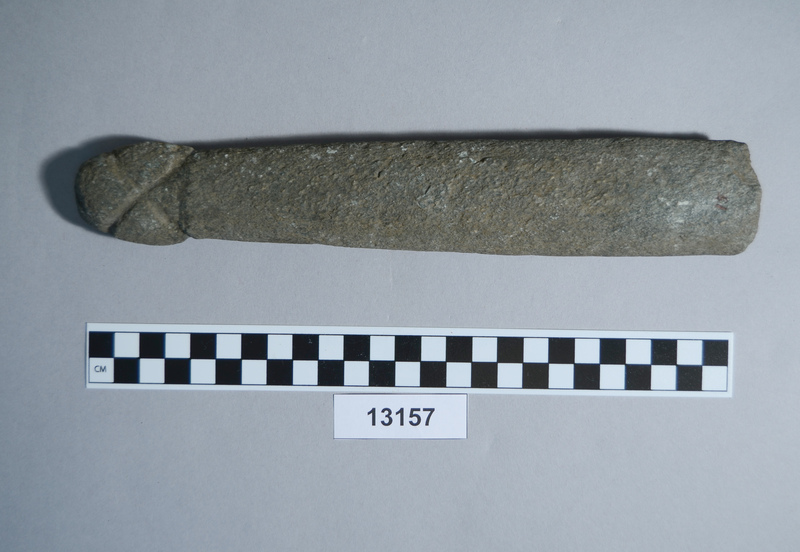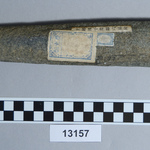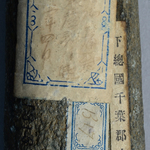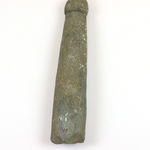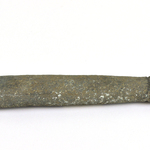Ceremonial Artifact
13157
From: Japan | Honshu | Chiba Prefecture | Rokutsu Village
Curatorial Section: Asian
| Object Number | 13157 |
| Current Location | Collections Storage |
| Culture | Jomon | Japanese |
| Provenience | Japan | Honshu | Chiba Prefecture | Rokutsu Village |
| Period | Jomon |
| Date Made | Early Jomon - Late Jomon |
| Section | Asian |
| Materials | Stone |
| Technique | Carved |
| Inscription Language | Japanese Language | Japanese Language | Japanese Language |
| Description | Phallic shaped mace or rod. Tip is carved with shallow lines which cross on each side. At the very end on one side of the tip there is a chip. Other end is broken. Gray stone. Phallic rods or maces similar to 13157, 13158 and 13159 have been excavated from Early Period to Late Period Jomon sites. They have been found in a context which implies that they had ceremonial or religious significance. For example, phallic-shaped carved stones were found in connection with low stone platforms at Yosukeone, in Nagano Prefecture. This site, which was a satellite site of a major Middle Jomon settlement, contained several such altars, often behind the fireplace along the wall of pithouses. In two other instances at Yosukeone they were found in a corner behind a roof support pillar. Some scholars believe such archaeological evidence indicates an increasing importance in community ritual practices. It may also be linked to elements which have continued in modern folk traditions and Shintoism. 13157 and 13159 were found in Rokutsu Village, Chiba Prefecture, Chubu Region. They vary slightly in form but are probably made of the same type of gray stone, one more highly polished than the other. They and the examples from Yosukeone characterize the prevalence of this type of artifact in the Chubu mountains and Kanto plain which especially flourished during the Middle Jomon Period. |
| Length | 26.1 cm |
| Width | 4.7 cm |
| Thickness | 2.5 cm |
| Credit Line | Exchange with the Japanese Commissioner, World's Columbian Exposition, 1893 |
| Other Number | 15 - Other Number | B17 - Other Number |
Report problems and issues to digitalmedia@pennmuseum.org.


